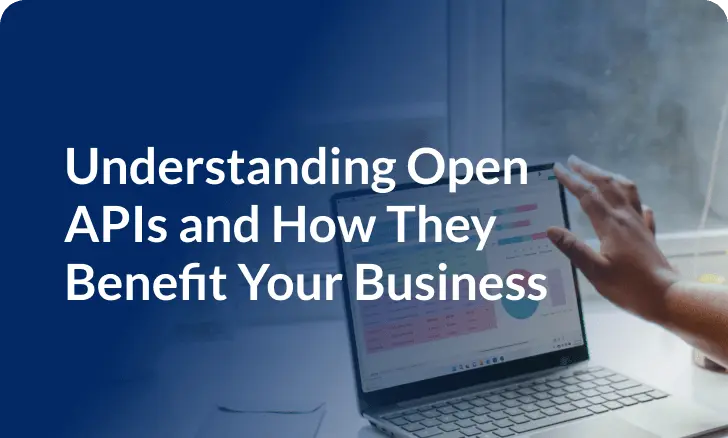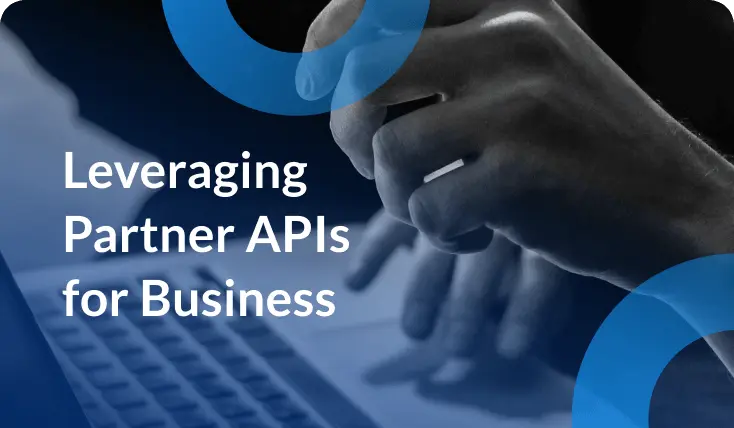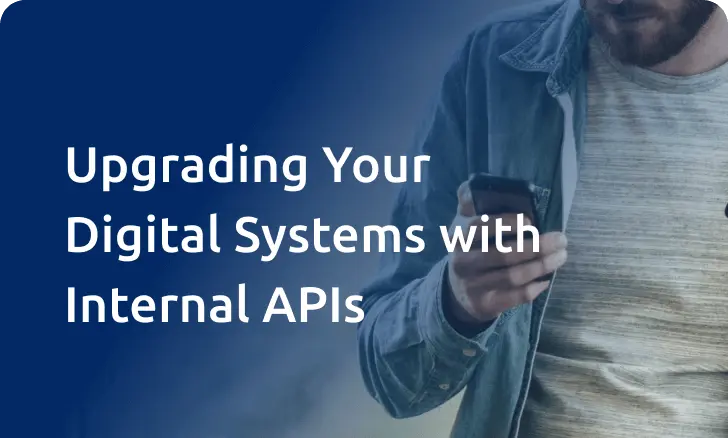Running a business is all about your users interacting with you. Whether it’s through service, engagements, or digital presence, your customer’s positive experience sets the tone for repeat purchases and customer loyalty. This is where APIs come in.
With the constant development of digital technology, applications play a key role in improving your business operations. They communicate, share data, and collaborate to deliver seamless user experiences. And behind the success of applications are APIs. These systems are the reason behind the efficiency and functionality of your digital apps.
But what exactly are APIs, and how do the different types impact the way applications function?
Understanding APIs
An Application Programming Interface or “API” acts as a bridge between software applications. It provides a set of rules and specifications that define how applications can interact with each other, exchange data, and implement functionalities.
Imagine application 1 and application 2. Application 1 receives your request from a well-defined menu of functionalities from the API and relays it to application 2. Application 2 will then process your request, while application 1 delivers it.
To get a better picture of how APIs are used, here are some examples of real-world cases:
-

Social Media
Platforms like Facebook, Instagram, and TikTok use APIs to enable third-party apps to integrate their login functionalities.
-

E-commerce
Seamless payment processing on online stores is often powered by partner APIs integrating payment gateways.
-

Mobile Apps
Weather updates, news feeds, and location services in mobile apps are frequently retrieved through APIs.
-

Travel Booking
Online travel platforms leverage airline and hotel APIs to provide users with consolidated search and booking functionalities
-

Fintech Applications
Money transfers, mobile banking, and investment apps utilize secure financial APIs to access and manage user accounts.
-

Internet of Things (IoT)
Smart devices often communicate with cloud platforms using APIs, enabling remote control and data collection.
4 Most Common API Types
Just like how restaurant menus cater to different preferences, APIs come in various types, each suited for specific purposes. Some of the most common examples of API are:
Public APIs (Open APIs, External APIs)
As the name suggests, public or open APIs are freely accessible to any developer. They allow your business to integrate functionalities or data from established platforms into your applications.
Social media logins (logging in to a new app using your Facebook account) and weather data integration in mobile apps are prime examples of public APIs in action.
Benefits and Challenges:
- Faster Development: Your developers can use existing functionalities and data from Open APIs to save time and resources in creating systems compared to building everything from scratch. However, they have less control over how the Public API functions or changes. System updates or disruptions can negatively impact your applications’ performance.
- Enhanced Features: Public APIs can add unique features to applications, making them more competitive and user-friendly. The only downside is that this type of system can lead to a saturated market using similar functionalities.
- Increased Scalability: Public APIs can handle a large number of requests, which is ideal for applications with a broad user base. But, since they are inherently more open, public APIs need careful security measures to protect your users’ data.
Partner APIs
Using partner APIs is ideal for facilitating communication and data exchange between authorized businesses (B2B). They enable your company to create unique features within applications by leveraging your partner’s resources.
For instance, a bank might offer a payment API to a financial technology startup, allowing the startup to integrate secure money processing into their app.
Benefits and Challenges:
- Competitive Advantage: Partner APIs enable businesses to offer unique functionalities that would be difficult or costly to develop in-house. Just make sure to establish clear contracts and service level agreements (SLAs) with your partners to ensure smooth operations.
- Increased Efficiency: Partner APIs can streamline your processes and workflows, leading to cost savings and improved operational efficiency. However, sharing your data with other businesses requires robust security measures and adherence to data privacy regulations.
- Revenue Generation: Your organization can monetize your partner APIs by charging other companies for access to your data or features. But, be wary of vendor lock-ins as it can make it difficult for your business to switch to another provider in the future.
Internal APIs (Private APIs)
Internal APIs are generally exclusive to your organization and are used for communication between internal systems. They streamline processes by enabling seamless data exchange between different departments' applications.
For example, an internal disbursement API can connect your company's HR system with its payroll system, automating your employee onboarding and salary processing.
Benefits and Challenges:
- Improved Efficiency: Internal APIs automate data exchange between your systems, eliminating manual processes and reducing errors. So, it’s important to maintain clear and up-to-date documentation to ensure its operations.
- Data Consistency: Internal APIs ensure consistent data formats and definitions across all internal systems. Just make sure you have proper access controls and data security measures in place to ensure data safety.
- Faster Innovation: Internal APIs enable your developers to build new applications and services quickly by leveraging existing internal functionalities. The only challenge is integrating them with your older systems can be quite tedious.
Composite APIs
With the complexity of digital ecosystems, a single API may not be enough. Composite systems are a type of API that addresses this by combining functionalities from multiple APIs into a single interface.
Imagine planning a trip. A composite API could integrate travel booking APIs with weather APIs and local attraction APIs, providing users with a unified platform for planning and booking their entire trip.
Benefits and Challenges:
- Simplified Development: Composite APIs streamline development by providing a single interface for accessing data from multiple sources. However, any disruptions or changes in the underlying APIs can impact the functionality of the composite API.
- Improved User Experience: Users can access and interact with data from various sources in a centralized location. The only drawback is that numerous and simultaneous “calls” can impact the performance and speed of the API.
- Increased Efficiency: Composite APIs eliminate the need for developers to manage multiple API calls individually. But, when errors do occur, troubleshooting multiple interconnected APIs can be complex.
All these types of APIs offer different functionalities, benefits, and challenges. It’s up to your business needs and developers to make informed decisions about which API is best suited for your project.
API Protocols Used For Digital Systems
While API types categorize the purpose of the communication, protocols define the "language" used for data exchange. Generally, there are three API protocols prominently used:
REST (Representational State Transfer)
This is the most widely used API protocol for web services, known for its flexibility and ease of use. It leverages HTTP requests (GET, POST, PUT, DELETE) to manipulate data in formats like JSON or XML.
SOAP (Simple Object Access Protocol)
SOAP is a more structured and secure protocol, often used in enterprise applications. It relies on XML messages for communication, ensuring data integrity and adherence to predefined rules. This protocol is ideal for payment transfer APIs since they deal with fund exchange.
Imagine SOAP as a formal business meeting; it's well-defined, secure, and ideal for complex data exchange.
RPC (Remote Procedure Call)
This protocol allows applications to execute functions on remote machines. It's simpler than REST or SOAP but offers limited flexibility in data types.
RPC is like a direct command; it's efficient for specific tasks but not ideal for complex interactions.
Factors to Consider When Choosing the Right Tool for the Job
Your selection of an API type and protocol to use for your business depends on several factors:
Complexity of Data
For simple data exchange, REST or RPC might suffice. Complex data structures might require the structured approach of SOAP.
Security Requirements
Public APIs might prioritize ease of use over security. On the other hand, enterprise applications may opt to use SOAP as they prioritize stronger security measures.
Performance Considerations
REST is known for its speed and scalability, making it ideal for public APIs. Complex data exchange in SOAP might require additional processing power.
Application Architecture
Microservices architectures heavily rely on APIs for communication, often favoring protocols like REST.
Much like selecting the right type of API, choosing between the protocols your company uses for your apps depends on your goals and what you’re using it for. For instance, if your business is an e-commerce shop, having a custom payment infrastructure using SOAP might be more ideal than using REST due to its security measures.
Maximizing Efficiency with the Right Type of API
APIs are like invisible conductors of digital apps, orchestrating easy communication and data exchange between applications. Without APIs, your digital ecosystem would fall behind in terms of usability and functionality, limiting your company’s potential for growth.
Understanding the different types of APIs and protocols lets your developers choose the right tools for your business projects. It lets them create powerful, integrated applications that deliver exceptional user experiences—that can positively affect your brand’s customer loyalty.










